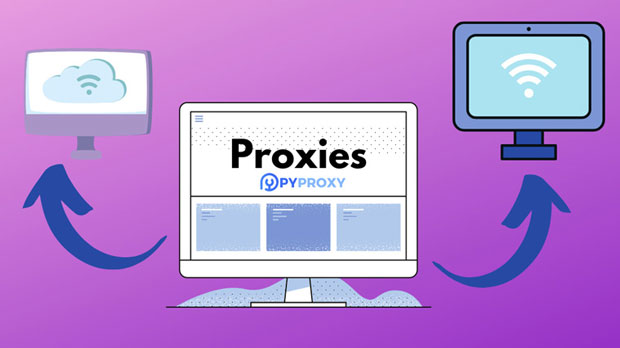In today’s digital era, social media management is a key factor for businesses aiming to expand their reach, engage with audiences, and stay competitive. One of the critical components of successful social media management is maintaining privacy, security, and efficiency. ISP proxies, or Internet Service Provider proxies, have emerged as essential tools in managing social media accounts, ensuring that users can access a wide variety of social platforms without facing restrictions. This article explores how ISP proxies can optimize social media management, enhance security, and provide greater flexibility in account handling, while also addressing the best practices for using them effectively. What are ISP Proxies?ISP proxies are servers that act as intermediaries between a user's device and the internet. Unlike traditional proxies, ISP proxies provide the advantage of using an IP address that belongs to a real Internet Service Provider (ISP). This makes ISP proxies appear as if they are regular users accessing the internet, giving them a significant advantage in terms of anonymity and reliability. ISP proxies are highly valued in social media management because they can bypass geo-restrictions, access blocked content, and ensure that accounts remain undetected.Why Use ISP Proxies for Social Media Management?Enhanced Privacy and SecuritySocial media platforms often have strict policies regarding account activity, including suspicious login attempts and actions that could indicate automation or bot-like behavior. ISP proxies can help social media managers maintain privacy by masking the true IP addresses of the accounts they manage, reducing the risk of account bans or suspensions. By rotating IP addresses and using real ISP-provided addresses, these proxies help avoid detection while carrying out large-scale operations, such as posting, commenting, or following/unfollowing users.Bypassing Geo-Restrictions and Content CensorshipDifferent regions and countries may impose varying restrictions on social media content. ISP proxies are a powerful tool for bypassing geo-blocks, enabling social media managers to access content that may otherwise be unavailable in certain countries. By selecting proxies from different geographical locations, users can simulate browsing from multiple regions, making it easier to manage accounts across diverse markets. This is especially useful for international marketing campaigns and region-specific content management.Efficient Account Management and AutomationManaging multiple social media accounts can be time-consuming, especially when handling large-scale operations. ISP proxies allow social media managers to work efficiently by enabling them to automate tasks such as posting, scheduling, and engaging with followers. By using proxies that rotate IP addresses, automation tools can function without triggering security alerts or facing blocks, ensuring smooth account management even when handling hundreds or thousands of accounts.Best Practices for Using ISP Proxies in Social Media ManagementChoose Reliable Proxy ProvidersNot all ISP proxies are created equal. For optimal performance, it’s crucial to select reliable proxy providers who offer high-quality proxies with minimal downtime. Reputable providers ensure that their proxies are fast, secure, and provide a wide range of IP addresses from different regions. It’s important to avoid using free proxy services, as they are often unreliable and can compromise the security of social media accounts.Use Rotating Proxies for Maximum FlexibilityOne of the key advantages of ISP proxies is their ability to rotate IP addresses. By using rotating proxies, social media managers can simulate diverse online activities without revealing the same IP address repeatedly. This feature is particularly useful for actions such as liking posts, following users, and commenting across multiple accounts. Rotating proxies help ensure that accounts do not get flagged for suspicious activity, making them an essential part of any social media management strategy.Monitor Proxy Performance and QualityEven though ISP proxies are generally stable, their performance can fluctuate based on server load, network congestion, and other factors. It’s essential for social media managers to monitor the performance of their proxies regularly. A slow or unreliable proxy can negatively impact the efficiency of social media tasks, causing delays in content posting, engagement, and interactions with followers. Utilizing proxy management tools and analytics can help track performance and ensure that proxies are functioning optimally.Avoid Overusing a Single ProxyWhile ISP proxies can be a powerful tool for managing multiple accounts, overusing a single proxy for too many accounts can lead to the risk of account bans or restrictions. It’s advisable to limit the number of accounts managed per proxy, depending on the proxy’s quality and the nature of the accounts being handled. Distributing social media tasks across multiple proxies can minimize risks and ensure a more sustainable management process.Benefits of ISP Proxies for Social Media Marketing CampaignsAccess to Global MarketsWith ISP proxies, social media managers can tailor their strategies for different global markets. By using proxies from various countries, they can test campaigns, understand regional preferences, and launch targeted marketing initiatives based on local trends. This approach allows businesses to have a more personalized and effective marketing strategy that resonates with audiences in different regions.Increased Automation and ScalabilityAutomation is at the core of modern social media management, and ISP proxies enable this by allowing social media managers to automate large-scale operations without facing blocks or bans. This includes automating content posting, liking posts, sending messages, and even interacting with followers. ISP proxies make it easier to scale operations across different platforms and accounts, ensuring that businesses can keep up with growing demands while maintaining security and efficiency.Enhanced Data Scraping CapabilitiesISP proxies also play a vital role in social media data scraping, which is the process of extracting valuable insights from social media platforms. With the right ISP proxies, social media managers can scrape data such as user demographics, engagement rates, and content performance metrics without triggering account restrictions. This data can then be used to refine marketing strategies and improve overall social media performance.Challenges and Considerations in Using ISP Proxies for Social MediaProxy Costs and Budget ConsiderationsWhile ISP proxies offer numerous benefits, they come at a cost. High-quality proxies can be expensive, especially if large-scale operations are being run across multiple social media accounts. Social media managers must carefully assess their budget and determine how many proxies they need to handle their tasks efficiently. It’s important to balance cost with performance to ensure that the proxy services are both affordable and effective for the scale of social media operations.Risk of Account Bans or RestrictionsDespite the advantages of using ISP proxies, there’s always the risk of account bans or restrictions. This can happen if the proxy provider’s IP addresses are blacklisted or if suspicious activity is detected by the social media platform’s security algorithms. To mitigate this risk, social media managers should use high-quality rotating proxies and spread out activities across multiple proxies to avoid red flags from platform algorithms.Conclusion: Maximizing the Potential of ISP Proxies in Social Media ManagementISP proxies are an invaluable asset for social media managers, providing enhanced security, privacy, and efficiency when managing multiple accounts. By using rotating proxies, bypassing geo-restrictions, and automating tasks, businesses can optimize their social media strategies and improve engagement with audiences worldwide. However, it’s essential to select high-quality proxy providers, monitor proxy performance, and avoid overusing a single proxy to ensure long-term success. By understanding the best practices and challenges involved, social media managers can leverage ISP proxies to achieve optimal results in their campaigns.
Oct 09, 2025


































































